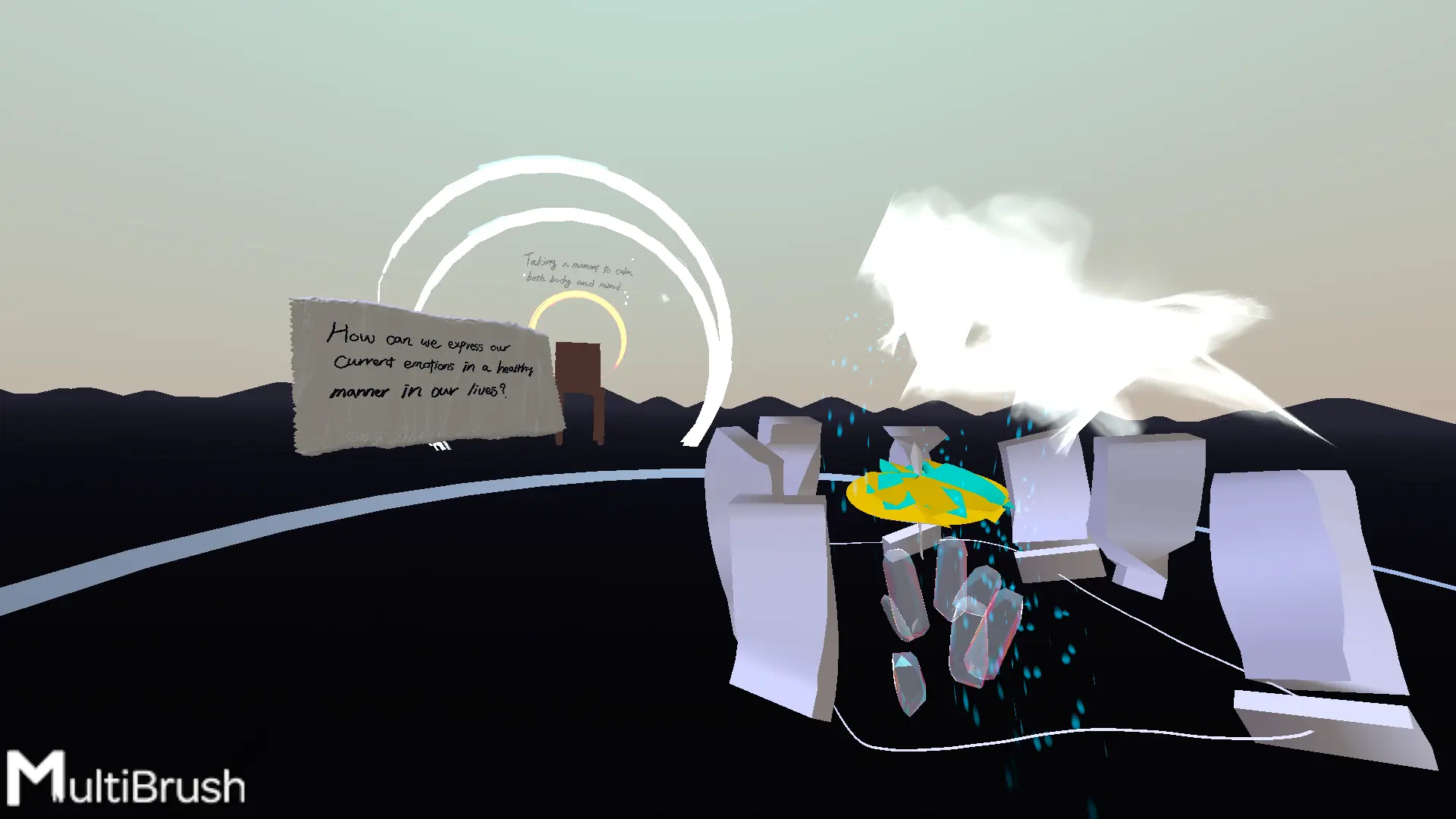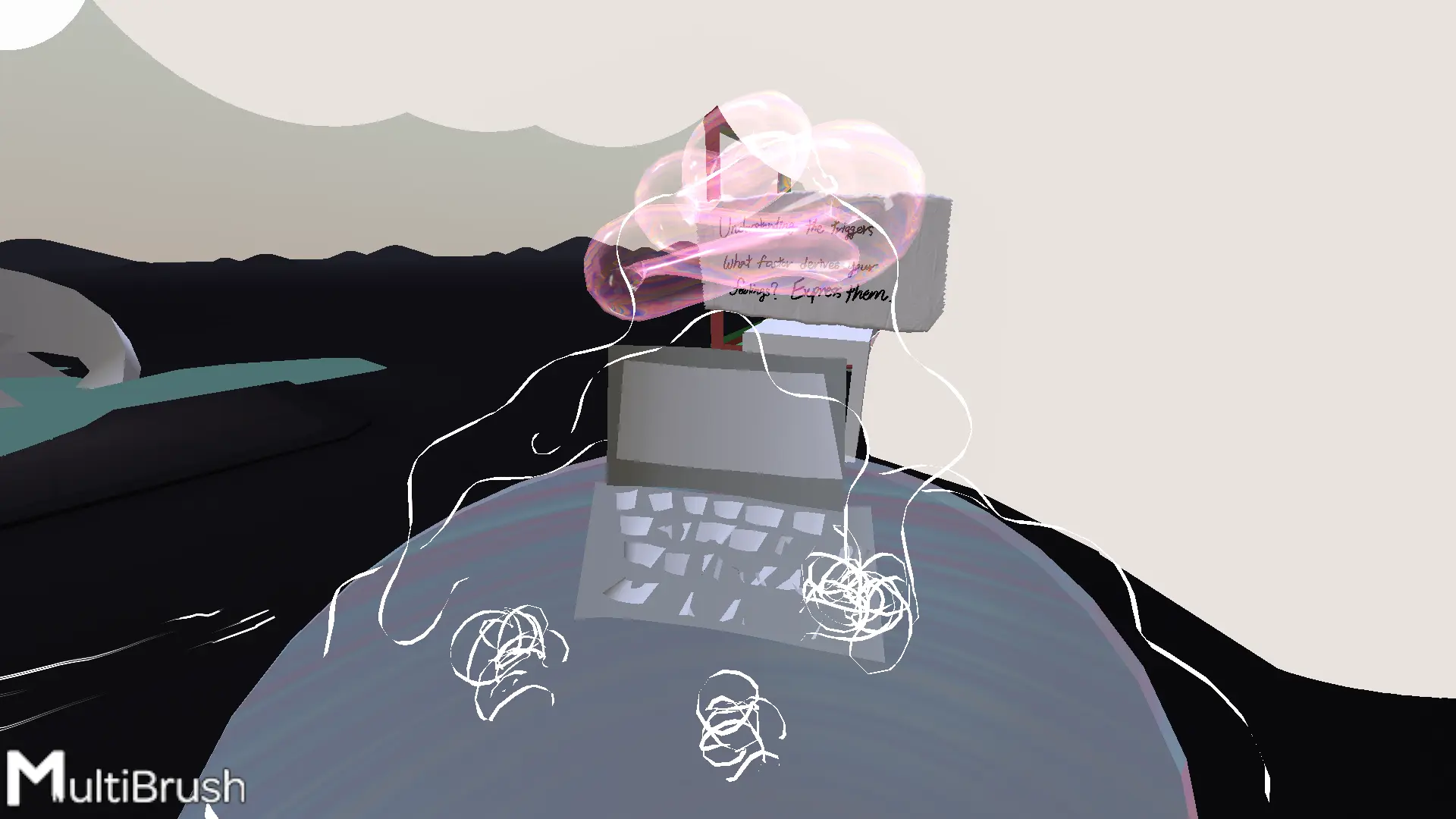Healing Emotions through Interwoven Virtual Paint
Kim Seoyeon
Seoyeon delves into the exploration of Self-Determination Theory (SDT) and its impact on enhancing engagement and motivation in the art therapy experience. Through the innovative use of the Tilt Brush Virtual Reality Application, Healing Emotions through Interwoven Virtual Paint focuses on South Korea's MZ Generation, aiming to provide aid to individuals grappling with daily mental care challenges.
How did you get interested in art therapy for the MZ Generation?
My target audience is the MZ generation in Korea. It's between 20s and 30s, so only that specific type of person. Also, the reason I chose this topic is because in Korea, there is a service gap and the MG Generation, they are not trying to get professional counselling. So I want to enhance the engagement and motivation to go for counselling by engaging them with VR art therapy.
I actually interviewed a Korean VR art therapist. I gained some insights and for the final outcome, I tried to create a VR art therapy session. So, I'm gonna set up the space in VR and also, print out the guidebook about the session. The third outcome is an AR filter, so before you try this VR therapy, you can actually know what it's like.
At least for me, before talking to you, I didn't know there was such a thing as VR art therapy. Can you explain what people do in VR art therapy and how that is different from normal art therapy?
Usually when you're thinking about normal art therapy, it's drawing and painting and they can use a lot of materials physically. But VR therapy means we're going to use the tilt brush, which is a kind of VR program. So using that program, you can draw something in VR space which allows you to zoom in and out.
 The electronic brushes have a lot of texture and even have audio. You can even input your 3D models and images so you can make collages. So it's quite immersive in a way. Because you don't just produce a visual, there's also audio and it's almost a new experience.
The electronic brushes have a lot of texture and even have audio. You can even input your 3D models and images so you can make collages. So it's quite immersive in a way. Because you don't just produce a visual, there's also audio and it's almost a new experience.
Could you explain the goal of your project? What do you hope to achieve?
While I was researching, I found that there is VR therapy, but the session is really the same; so one session is gonna be used for all of the people. But our therapy needs their individual sessions. So I want to make an interactive guide video. When you see the video, then you can select each of the buttons based on your emotions and situation. So it's gonna suggest the session based on your emotions.
You mentioned that you talked to VR art therapists. When you shared with them about your project, how did they react?
At first, she was just surprised because actually in Korea, VR art therapy is not commercialised. So she only tested some people for her project. But I know she was the only person who tried VR therapy in Korea so I'm lucky I got to collaborate with her. So when she saw my project, she said that this is a good start to make individual sessions for the MG Generation. At my last interview with her, she asked me, “You want to study this area more?” But you know, I'm a graphic designer, so…
See Exhibitions beyond Immersive Augmented Reality, and LINK
See Antidotes for Bruised Creatives, Brushstrokes of Dyslexia